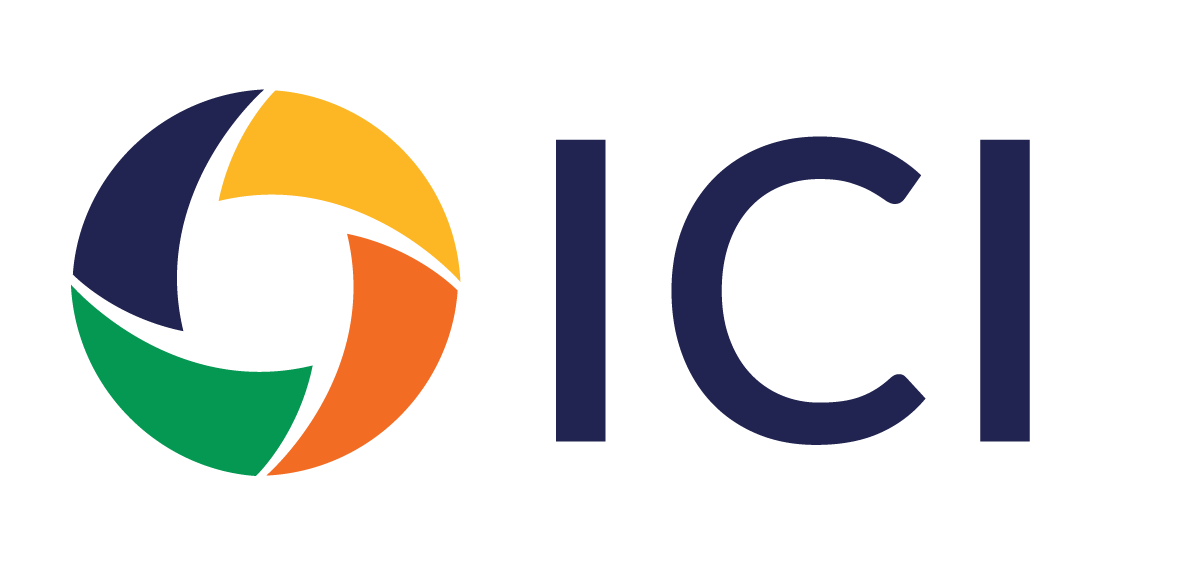How to Build a Productive and Engaged Distributed Workforce

Knowing how to manage a remote team isn’t just about keeping projects on track – it’s about building a culture where people across time zones and cultures feel connected, trusted, and motivated. When done right, it can unlock world-class talent, improve retention, and drive measurable results. This article shares practical strategies to help you make it happen.

Global Benefits for Organizations
- Global health, life & disability benefits for your team
- Quotes from top international insurers, guided by experts
- Supporting organizations navigating global growth
Key Takeaways
- Set clear expectations: Define roles, deadlines, and communication norms to avoid confusion.
- Leverage technology: Use collaboration, project management, and knowledge-sharing tools to stay connected.
- Prioritize communication and engagement: Schedule regular check-ins, provide feedback, and recognize achievements.
- Build trust and an inclusive culture: Encourage team bonding, respect cultural differences, and empower autonomy.
- Adapt to global teams: Be mindful of time zones, language, and local labor or benefits considerations.
- Use structured frameworks: Implement approaches like C.A.R.E. to sustain communication, accountability, relationships, and engagement.
What Is Remote Team Management?
Remote team management is the art and science of coordinating, supporting, and empowering employees who work outside traditional office environments, often spanning different countries and cultures.
It covers multiple models, including:
- Hybrid work: A mix of in-office and remote days.
- Fully remote: Employees work entirely off-site, often from different countries.
- Flexible arrangements: Employees choose where they work based on project or personal needs.
Unlike managing co-located teams, managing remote teams requires intentional effort to overcome physical distance, cultural differences, language barriers, and time zone challenges to build a cohesive, high-performing workforce.
At its core, success depends on cultivating a remote work culture grounded in trust, transparent communication, cultural intelligence, and shared accountability.
Without these foundational elements, teams can struggle with isolation, miscommunication, and disengagement, which can impact productivity, morale, and business performance.
Building a Culture of Trust, Accountability, and Inclusion
A thriving remote work culture promotes openness, collaboration, and inclusivity despite distance and diversity.
For example, North American employees may prefer direct feedback in meetings, while East Asian colleagues might opt for private or written suggestions.

Recognizing and adapting to these cultural preferences builds trust and prevents misunderstandings.
Leaders can foster this culture by:
- Creating virtual spaces for open idea-sharing.
- Encouraging meaningful interactions beyond task updates.
- Modeling inclusive communication tailored to diverse audiences.
- Setting clear roles, goals, and timelines so expectations are transparent.
- Empowering team members with ownership and autonomy while avoiding micromanagement.
- Using visible progress tracking tools to balance autonomy with accountability.
This integrated approach strengthens trust, bridges cultural gaps, and prevents disengagement, which ultimately drives productivity and morale.
Onboarding, Training, and Developing Cultural Intelligence
Effective onboarding lays the foundation for remote employee success by clearly communicating company culture, workflows, and expectations, while thoughtfully accommodating different time zones and languages.
Ongoing training, both technical and cultural, keeps skills sharp and ensures alignment with evolving team goals.
Cultural intelligence (CQ) training further enhances awareness of diverse communication styles, work habits, and social norms. This helps reduce misunderstandings and fosters respect, collaboration, and inclusivity across borders.
Structured recurring meetings, such as daily stand-ups or weekly syncs, can support these efforts. They help maintain momentum and provide regular opportunities to address challenges early.
These predictable touchpoints keep everyone informed and engaged, strengthening overall team alignment.
Introducing the C.A.R.E. Framework for Remote Team Success
Once the basics of onboarding and training are in place, adopting a focused framework can help managers sustain a high-functioning virtual team.
The C.A.R.E. framework highlights four critical pillars for remote team success:
- Communication: Prioritize clear, frequent, and culturally aware communication to keep everyone informed and aligned across time zones and languages.
- Accountability: Set transparent expectations and measurable goals to ensure ownership, track progress openly, and maintain shared responsibility.
- Relationships: Build strong personal connections through regular check-ins and informal virtual social interactions, like casual chat channels or virtual coffee breaks, to replicate water cooler moments, combat isolation, and foster trust.
- Engagement: Keep motivation high by recognizing achievements and involving employees in meaningful ways, while providing autonomy and support to empower decision-making.
Each pillar addresses common remote work challenges and supports a thriving, connected, and motivated team culture, regardless of location.
How to Put C.A.R.E. Into Action
To put the C.A.R.E. framework into action, implement these proven best practices:
- Choose and clarify communication channels upfront to prevent confusion.
- Define measurable goals and promote accountability with supportive feedback.
- Schedule regular check-ins and timely performance reviews.
- Encourage collaboration and virtual team-building to deepen relationships.
- Maintain motivation with recognition programs and opportunities for growth.

Essential Remote Team Management Tools and Systems
Virtual teams thrive with the right digital tools that enable seamless collaboration:
- File sharing: Use secure cloud drives like Google Drive, Dropbox, or OneDrive to store and share documents, ensuring team members have real-time access to the latest files from anywhere.
- Communication: Facilitate meetings and daily check-ins with video conferencing tools like Zoom or Microsoft Teams, and encourage informal chats and quick updates through platforms like Slack or Google Chat.
- Project management: Communicate tasks and deadlines transparently using project management tools like Asana, Trello, or Monday.com, which help teams track progress and collaborate efficiently.
- Performance tracking: Monitor productivity and provide timely feedback using tools like 15Five, Lattice, or Workday Performance Management, which support goal-setting and performance reviews.
- Benefits management: Manage global employee benefits with platforms like Benify, Zest Benefits, or Welltok, which integrate international health insurance options and wellness programs tailored to employees’ locations.
Need help choosing the right health benefits for your remote team? Our experts specialize in global health insurance solutions designed to support your team’s diverse needs. Contact us today for personalized guidance or compare group health plans to ensure your virtual workforce stays healthy, engaged, and protected.
How to Engage and Motivate Remote Employees
Knowing how to manage a remote team means fostering connection and motivation beyond just overseeing tasks.
Keeping virtual employees engaged requires deliberate effort to build trust, encourage collaboration, and support well-being, which are key to sustaining productivity and loyalty.

Consider these approaches:
- Host virtual team-building activities to foster camaraderie and reduce isolation.
- Recognize achievements through shout-outs, rewards, or other celebrations.
- Promote work-life balance and support mental health initiatives to maintain well-being.
- Provide comprehensive health insurance tailored to employees’ locations. Access to appropriate healthcare strengthens trust and commitment, reducing turnover and boosting morale.
Read more about the Group Global Benefits and Insurance plans we offer.
Supporting Holistic Health and Well-being
Beyond insurance, promoting overall well-being is essential to sustaining a healthy remote workforce:
- Offer mental health resources and support for work-life balance.
- Encourage ergonomic home office setups.
- Implement initiatives to prevent burnout and foster resilience.
- Promote regular physical activity with wellness challenges or virtual fitness sessions.
- Encourage taking breaks and setting boundaries to avoid overwork.
- Provide access to healthy lifestyle resources, like nutrition advice or mindfulness programs.
- Foster social connections through virtual social hours or interest-based groups.
Overcoming Challenges of Managing Remote Employees
Global remote teams face challenges such as:
- Language and communication barriers due to the lack of face-to-face cues.
- Isolation and disconnection, often worsened by cultural misunderstandings.
- Scheduling difficulties across multiple time zones.
- Navigating diverse labor laws and benefits regulations.
Knowing how to manage a remote team means applying intentional communication, fostering inclusion, and creating flexible workflows that accommodate diverse needs.
Proactive solutions such as structured communication, culturally aware team rituals, flexible scheduling, and localized policies help keep teams aligned and engaged.
Ensuring Data Security and Privacy
Managing remote teams across multiple countries involves navigating various data privacy laws, such as GDPR in Europe or CCPA in California.
Companies must implement robust security protocols for remote access and data sharing to protect sensitive information and comply with international regulations. This is key to safeguarding both business operations and employee privacy.
Fostering Continuous Improvement Through Feedback
Regularly collecting feedback from virtual employees worldwide allows HR and leadership to identify challenges unique to different regions and adapt policies accordingly.
Encouraging open dialogue through surveys, virtual town halls, and one-on-one check-ins supports a culture of continuous improvement and responsiveness.
Navigating Legal and Compliance Considerations
Managing virtual teams requires addressing complex legal issues, including labor laws, tax regulations, and benefits administration that vary significantly across jurisdictions.
HR and global mobility leaders should collaborate with legal and compliance experts to ensure that contracts, health coverage, and employment policies meet local requirements and protect both the company and employees.
For many organizations, partnering with Employer of Record (EOR) or Professional Employer Organizations (PEOs) offers a practical solution.
These service providers act as the legal employer in target countries, handling payroll, compliance, benefits, and tax filings. This allows companies to onboard and manage remote employees globally without setting up local entities.
Proactively addressing compliance risks, including culturally appropriate health and wellness benefits, supports a sustainable and legally sound global remote workforce.
Bridging Compliance and Contractor Coverage
After addressing the legal and compliance considerations for your global workforce, it’s important to evaluate how contractors fit into your benefits strategy.
While full-time employees often have well-defined eligibility for group health plans, contractors may be treated differently depending on local regulations, contract length, and plan design.
Understanding these nuances ensures your benefits program remains compliant, equitable, and tailored to the needs of your entire distributed team.

Including Contractors in a Global Benefits Plan
Many organizations wonder whether contractors can be included in group health plans, and the answer depends on several factors.
Insurers typically evaluate the following when determining eligibility:
- Nature of their occupations: Understand the contractor’s role and responsibilities relative to the team.
- Length of contracts: Determine if contracts are long-term (more than a year) or short-term (where contractors are added to the scheme for just a few months for a specific project).
- Existing contracts: Confirm that a valid contract exists between the contractor and the employer to ensure coverage is extended only to legitimate team members.
- Parity with employees: Are contractors offered the same plan options as regular employees, or treated differently? Differences could include separate benefits categories or a scheme exclusively for contractors, while regular employees remain on a separate plan.
- Current scheme membership: For existing schemes transitioning to a new carrier, determine whether contractors are already included or being added now.
- Staff turnover data: Larger schemes (typically 50+ employees) may require turnover information to assess coverage sustainability.
By carefully evaluating these factors, organizations can structure coverage that protects both employees and contractors while remaining compliant.
Our experts can guide you on eligibility, plan design, and coverage options for your global team, including contractors.
Ready to Strengthen Your Remote Workforce?
Knowing how to manage a remote team effectively is both a challenge and an opportunity. With the right culture, tools, and leadership, you can build a productive, connected, and engaged workforce, no matter where they work.
By strategically embracing remote work models, you can unlock access to diverse talent, reduce operational costs, and strengthen your organization’s global resilience.
Contact us today to learn how our global benefits solutions can help you attract, support, and retain top talent, anywhere in the world.

Find the Best International Medical Insurance
- Compare multiple quotes and coverage options
- Work with an insurance expert at no additional cost
- Find the best plan for your needs and budget
Read More
- Top 10 International Health Insurance Companies
- Group Global Benefits and Insurance
- International Group Health Insurance Plans
- Comprehensive Global Medical Plans
- Compare Global Health Insurance Plans
- Health Insurance When Working Abroad
- How To Avoid Remote Working Fatigue
Author: Andrew Blomberg is the Vice President of Global Benefits at International Citizens Insurance. Andrew is a licensed insurance broker with expertise in the areas of international group travel, global health, life, and disability insurance. Having worked and traveled throughout the world, he has the experience to provide personal insight along with his industry knowledge. Andrew is dedicated to providing group benefits to organizations, large and small, for today's global workforce. Connect with him on LinkedIn.
